I make no secret of the fact that I’m not a great football shirt collector. I have almost every Scotland home shirt since 1985, a couple of Celtic tops, a rugby shirt or two and a variety of others. But my collection numbers no more than about 30.
However, when I was offered the chance to buy an Umbro shirt that appeared to date from the post-war period I just couldn’t turn it down.
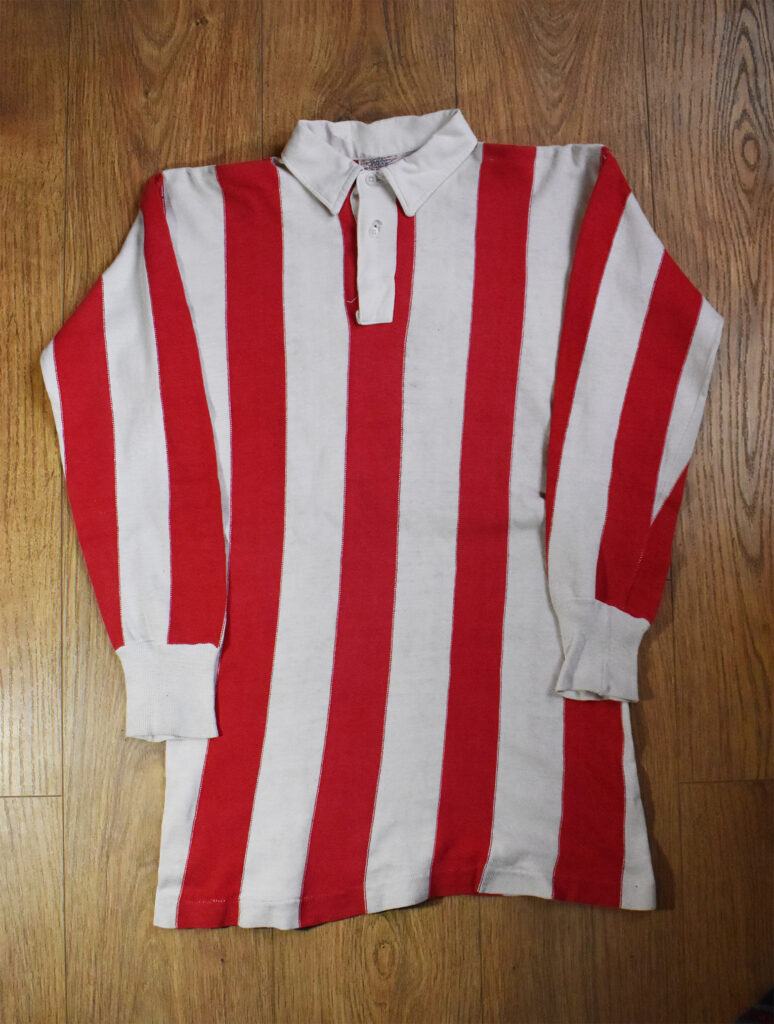
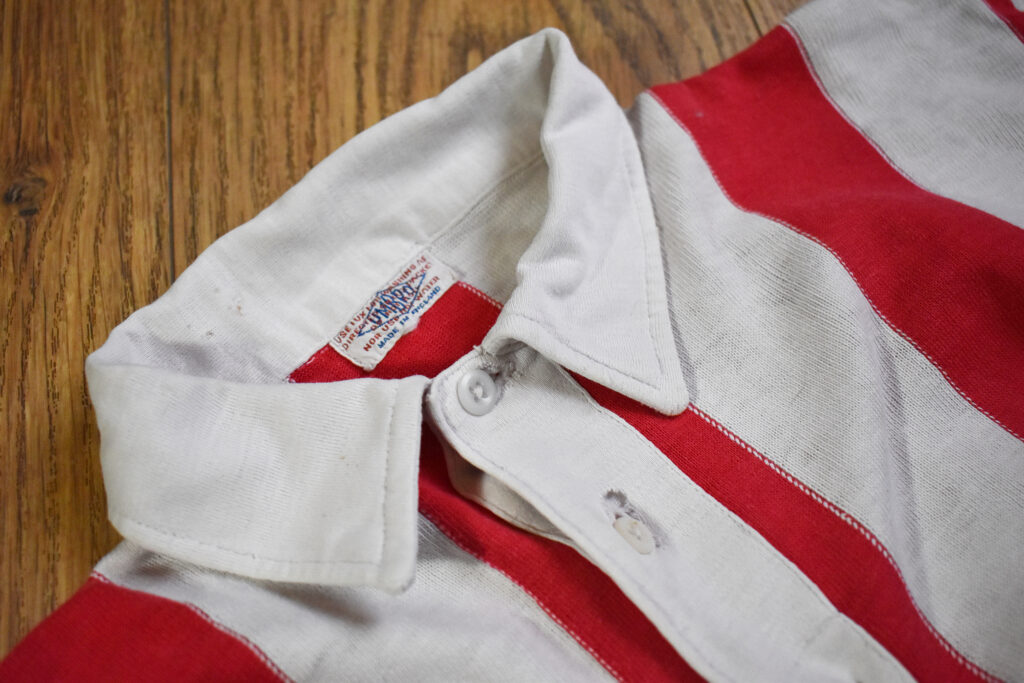
The red and white striped shirt features a two-button open placket and collar. One of the buttons appears to be a replacement but apart from a few small marks and one pull on the arm is in excellent condition. On the back was a black number 2 affixed to a white patch and sewn onto the shirt.
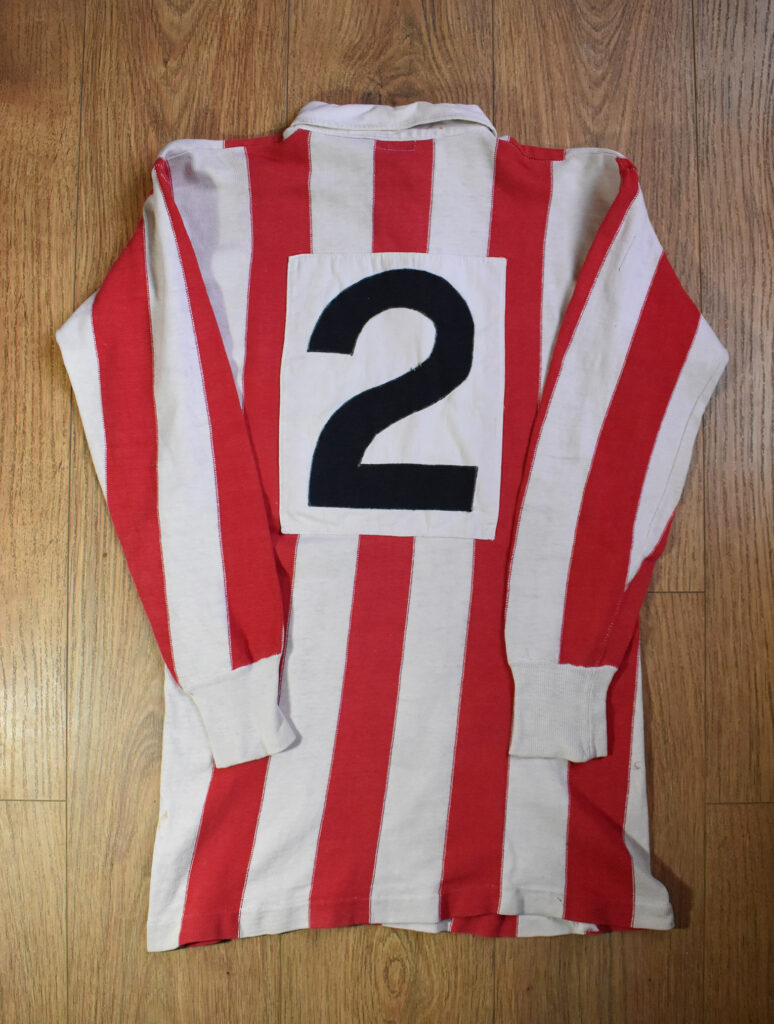
Another point of interest is the tiny, faded CC41 Utility label on the bottom seam. This label was a requirement from the British Board of Trade from 1941-1951 and appeared on footwear, furniture and textiles and indicated that the item met the government’s strict austerity regulations during WW2. This label was a key piece of evidence that dated the shirt to this period.
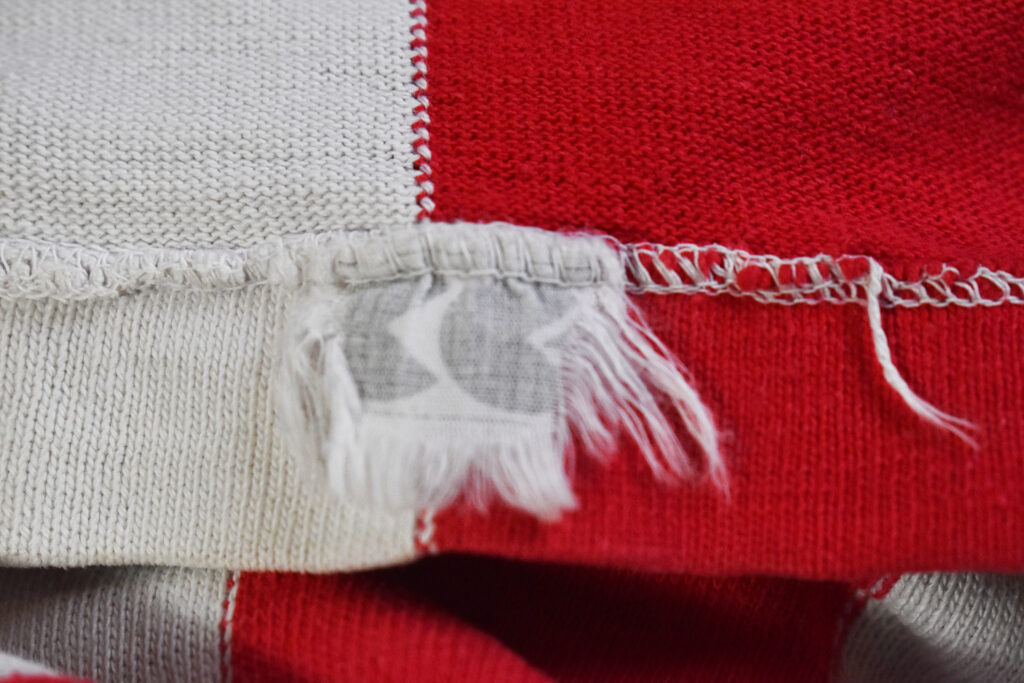
I dug out my Umbro catalogues; one from from WW2 and a later edition from 1957 to see what I could find out.
The wartime catalogue (below) shows the striped jersey as part of their Football and Hockey range (Association Football range at this time still only referred to lace-up necked jerseys). The ‘Zebra’ looked to be the only striped shirt available but a look at the illustration showed striped lapels and what appears to be a three (or four) button placket.
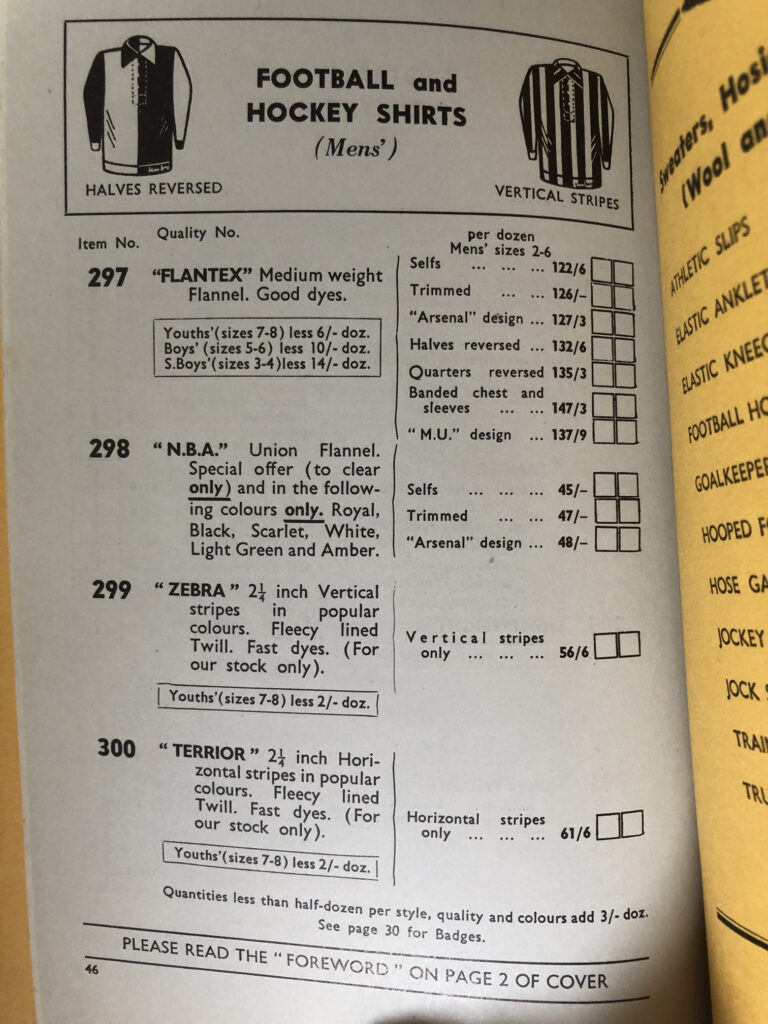
The 1957 catalogue however seemed to feature the shirt in question. The collar was a single colour and the shirt featured just two buttons (in times of austerity why have a three-button placket when you could get away with just two!) The shirt itself appears to be pretty small, measuring 18″ from armpit to armpit so I guess it could either be the Verstripe or the Plover (which was a junior jersey). The other difference is that the collar and cuffs are white rather than coloured but as the catalogue says variations in design can be produced to order only.
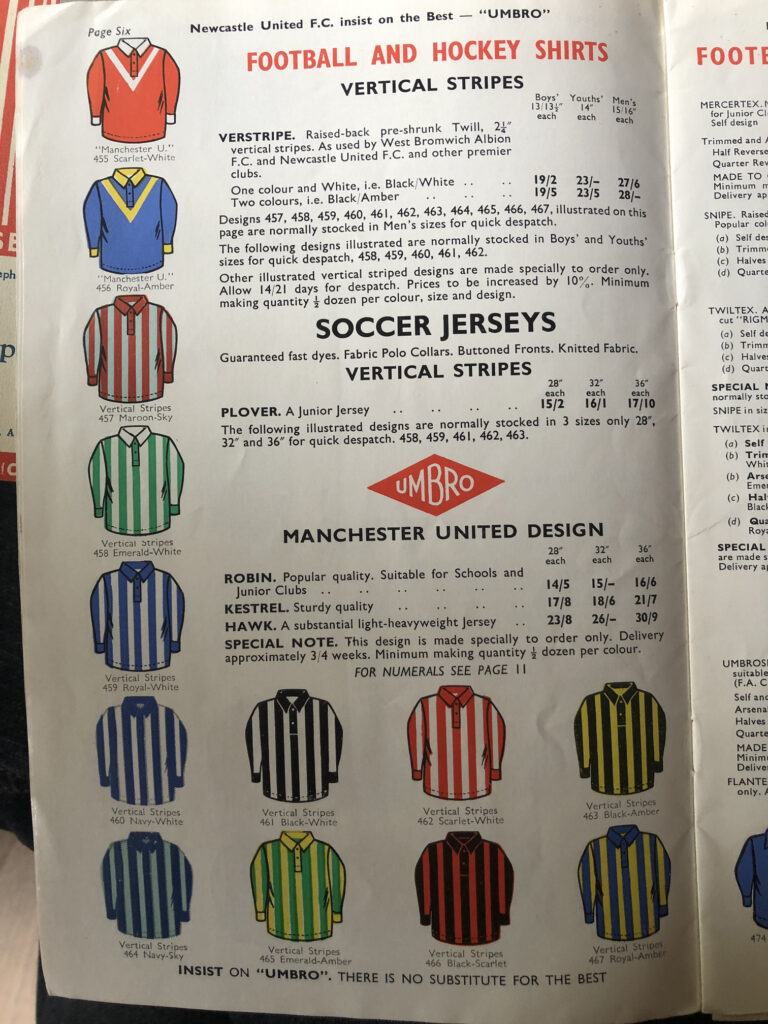
So after considering all the evidence it would appear that the shirt probably dates from the late 1940s (post-war) and certainly before 1951 when the CC41 Utility label was phased out.
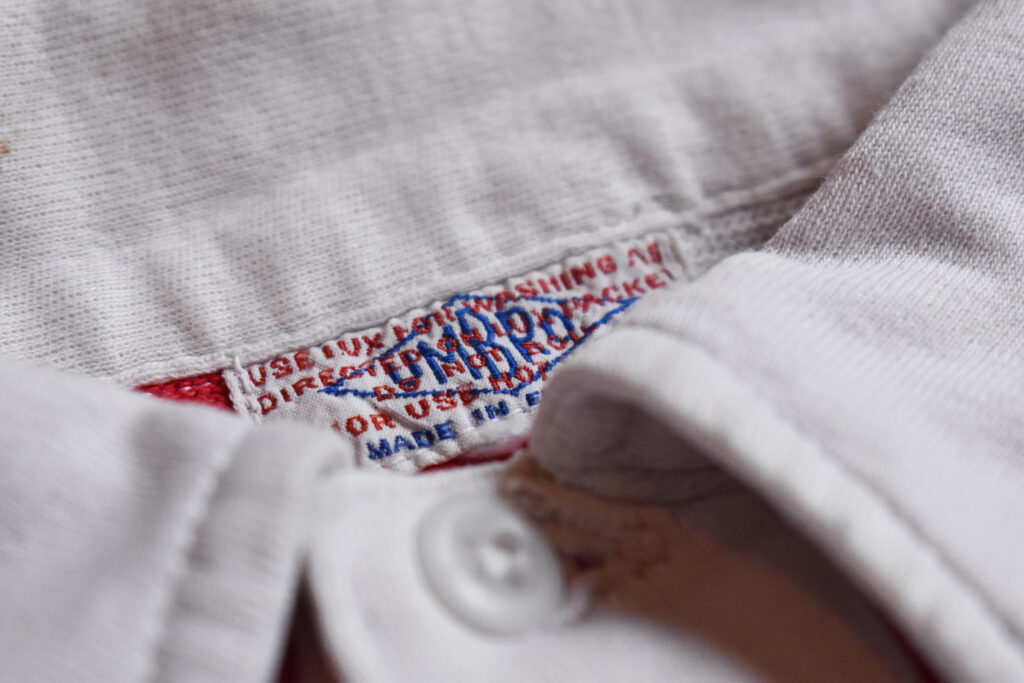
The shirt was presented as a match worn Sunderland jersey, apparently sported by the club’s defender and captain Fred Hall who played for the club from 1946-1954. As a defender the number 2 matches, the white collar and cuffs would only be available as a special order, you would assume by a professional club, and, as the National Football Museum commented on when they saw it, shirt numbers would only have been used at the time for a professional or semi-professional club given the cost and time involved.
So is it a match worn Sunderland shirt?! Well, unfortunately I’ve not been able to find any evidence of the club wearing this particular style of jersey (they normally favoured striped lapels around this time) so without photographic proof I really don’t know.
To be honest though, it doesn’t bother me at all. As a massive Umbro fan I’m just thrilled to own an approximately 70 year old football shirt. You can just feel the quality of the fabric, the weight of the yarn and imagine it being worn in a match. It’s a million miles away from the lightweight shirts of today but a real memento from the game at a time when the world was recovering from the ravages of war.
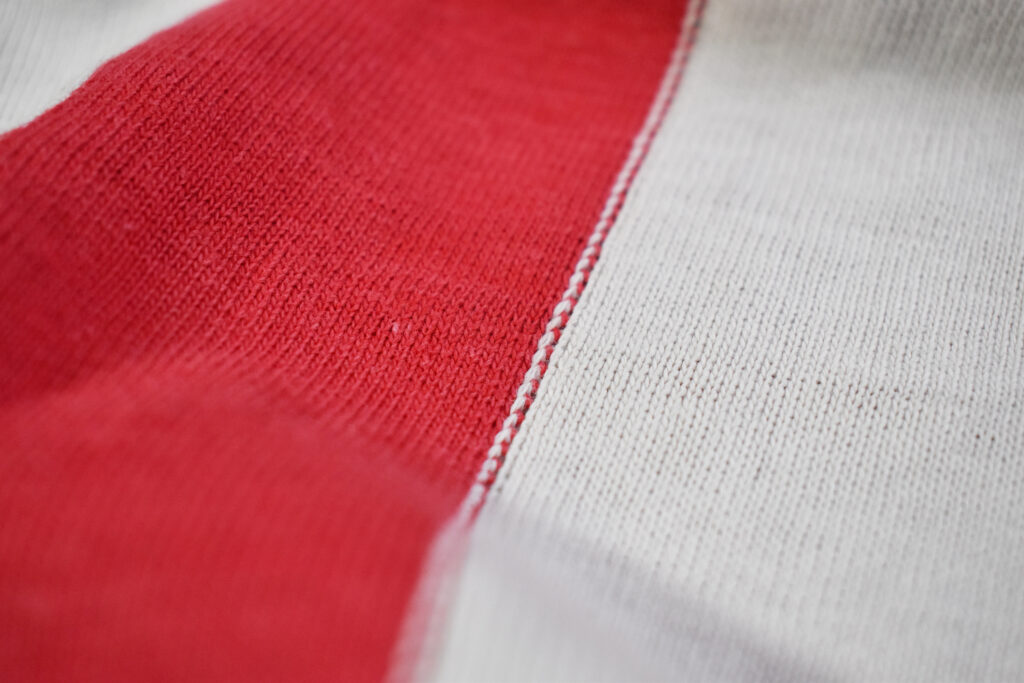
If you can help with authenticating this shirt or other any other information or comments about it I’d love to hear from you.

What a lovely artefact, John!
As much as anything else, I always find it quite surprising to see that number style on a shirt so old. For a seemingly modern Helvetica-type font (no pun intended), it’s odd to see it associated with a shirt from just after the Second World War!